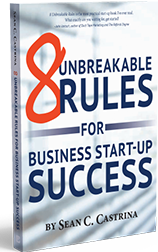You’re losing customers.
How can you get them back? Where have they gone? That’s what we’re talking about today. It happens. You start looking at your client list and you’re like, where do they go? Where do they go?
So how can we fix this?
Find Who is Leaving
Well, the first thing you need to do is you need to find out who’s actually leaving. This is why you need data. This is why you need quick book files. You need software to keep track of your clients and how often they buy from you. You can see there, the relationship that you have with them, how frequent they buy, what their average spend is, etc. So first thing, if you want to know where have they all gone and how can I get him back. You need to find out who is leaving. Look through your client list and look at percentages.
Let’s just say you have a thousand customers and on average, you have 400 client transactions a year, and then the one year you have 300. You need to start looking in there because you’re losing somebody there. You need to start extracting. And one thing you can kind of look at when you’re looking at who’s leaving is somebody who may have purchased twice a year, now only purchases once every two years. You have to dig in the data.
Find Why They are Leaving
You identified Mary Ann and John Smith are no longer customers of yours, or ABC tools is no longer a customer of you. Well, why are they no longer a customer of ours. I typically find that there are three reasons why customers are gone, why they’re leaving, and I want to absolutely not have this as one of my problems, but it’s typically one of these three:
- I have a systematic problem. We’re doing something systematically wrong, we’re answering the phone in a way that we use to not. Maybe we’re making the scheduling and estimate too difficult, maybe we have a systemic problem with our website. It’s complicated, there’s a systemic repeatable problem, we’re not doing a great job delivering what we’re promising our customers. That’s a systemic problem. I always ask my staff, my partners, is that problem solved? And they share whether was it a one-time problem or is this a systemic problem. I can live with a one-time problem. I don’t like systemic repeated problems. If you’re losing customers to a systemic problem, that’s massive.
- You’re losing to your competition. Do you even know your competition in detail? It’s like planning against a football game. Bill Belichick could tell you all the good and bad of every team in the NFL. He knows who his competition as he knows whether they like to run the ball, pass it, or a combination of both. Do they blitz a lot? Whatever it is, you need to know your competition, because if you don’t, they’re probably taking your customers because they’re doing something that you don’t know that they’re doing in a good way. They’re out competing you. They’re winning in the game of business.
- Your USP is no longer working. What’s that? This is your unique selling proposition. This is why customers are gonna buy from you, and 10 years ago, your USP was decent/ I think GEICO is struggling with theirs. It used to be 15 minutes, we’ll save you 15% or less. Then they kind of were going away from it a little bit trying to get you to buy more, kind of. They just left it a little bit, try to get too cute with that little gecko, and they’re trying to get back to it. The problem is this 15%, I think it’s lost its luster. Why is that? Well, State Farm is telling you safe drivers save 20%. They repeat it seven times in their commercial.
Get Them Back — Mea Culpa’s and Incentives
Fix one of the reasons why they’re going. Ask them for another chance. I can’t explain it, but the words, I’m sorry go a long way. The words, I made a mistake go a long way. I do it! I have called customers and just said, You know, I notice you’re not using this as much. Where did we blow it? And they’ll tell you! Maybe you need to do that at the end of the year. Just go through and just ask. Do an online survey of your customers.
It’ll confirm one of your whys, but it’ll give you a chance to engage with them verbally, and you can ask for another chance. Sometimes just have to make a peace offering. I’m so sorry. We blew it there. We’re gonna do better. Maybe, you know, do some type of incentive. That’s a basic peace offering. Maybe if that doesn’t you have to give them a strong incentive like a free couple hours of work or a discount.
So what can you do to lure them back? They’re buying from your competition. You have to dig deep, give them an incentive.
Keep them Engaged
Are you giving them reasons to fall in love and stay in love with your company? Are you keeping your customers engaged?
What is the lifetime value of a customer to you? When you figure out what that is, you’ll start doing all these things I just talked about.
The lifetime value in one of my companies is $25000. That’s worth a peace offering every year. That’s worth offering a few hours of free services. Maybe that’s offering a big incentive. They were a great customer at one point and now they’re not. Now, this is specifically true of commercial accounts. You need to know what the lifetime value is of your customers and what you know what that is. That’ll be your great incentive because when you lose one of them, your competition is getting your dollars.


